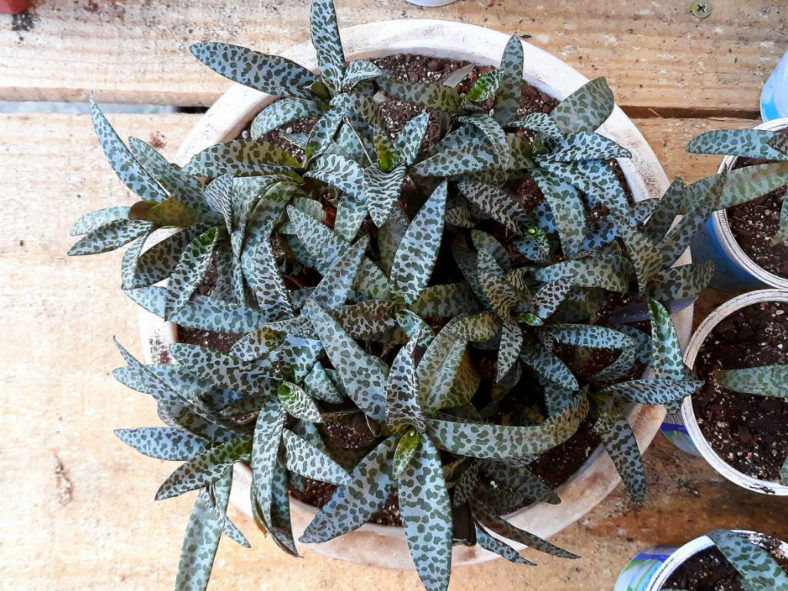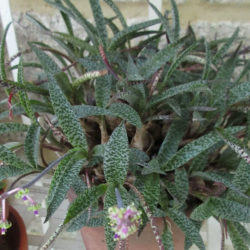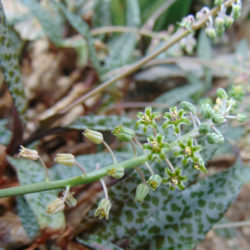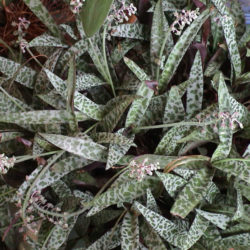Scientific Name
Ledebouria socialis (Baker) Jessop
Common Name(s)
Silver Squill, Wood Hyacinth
Synonym(s)
Scilla socialis
Scientific Classification
Family: Asparagaceae
Subfamily: Scilloideae
Tribe: Hyacintheae
Subtribe: Massoniinae
Genus: Ledebouria
Description
Ledebouria socialis is an attractive low-growing plant with teardrop-shaped bulbs, usually entirely above the ground, and lance-shaped, somewhat spreading leaves. It is one of the most widely cultivated bulbs favored by succulent growers. The bulbs are up to 0.8 inches (2 cm) long and usually produce colonies vegetatively. The leaves are somewhat fleshy, reaching up to 4 inches (10 cm) in length and 0.6 inches (1.5 cm) in width. They are often deep pink or violet below and silvery, adorned with green to brown blotches on the upper surface.
From late winter to spring, 10 to 30 small bell-shaped flowers rise on delicate pink, more or less erect stalks just above the foliage. The flowers have greenish petals with white markings and a flush of pink and purple stamens bearing small, pale yellow anthers.
Origin
Ledebouria socialis is native to the Eastern Cape Province of South Africa. It often grows on rather dry slopes between Uitenhage and East London in the Eastern Cape province.
Etymology
The specific epithet "socialis (so-KEE-ah-liss)" means "of or pertaining to allies or confederates; allied, confederate" and refers to the habit of the species to grow in groups or colonies.

Hardiness
USDA hardiness zone 10a to 11b: from 30 °F (−1.1 °C) to 50 °F (+10 °C).
How to Grow and Care
Silver Squill is often cultivated as a houseplant and grows with minimal care. However, it requires bright light with 3 to 4 hours a day of direct sunlight.
During the active growth period, interior temperatures are fine for Silver Squill's grown as houseplants. Outdoor plants can withstand winter temperatures below 30°F (-1°C). Try growing Silver Squill outdoors during spring and summer when ambient temperatures are at least 60°F (15°C). In cold regions, move the plant back indoors.
Use a soil-based potting mixture and plant Silver Squill bulbs in pans or half-pots. Pot up the bulbs in the spring, but no more than three in a single 4 to 6 inches (10 to 15 cm) pot. Space the bulbs evenly over the surface and bury only the bottom half of each bulb in the potting mixture. During the first 4 or 6 weeks, do not feed the plants and water sparingly, allowing the top half of the potting mix to dry out between waterings. When the new roots should be well established, treat the plants usually. Break up overcrowded clumps every 2 or 3 years.
See more at How to Grow and Care for a Silver Squill.
Links
- Back to genus Ledebouria
- Succupedia: Browse succulents by Scientific Name, Common Name, Genus, Family, USDA Hardiness Zone, Origin, or cacti by Genus
Photo Gallery
Click on a photo to see a larger version.


